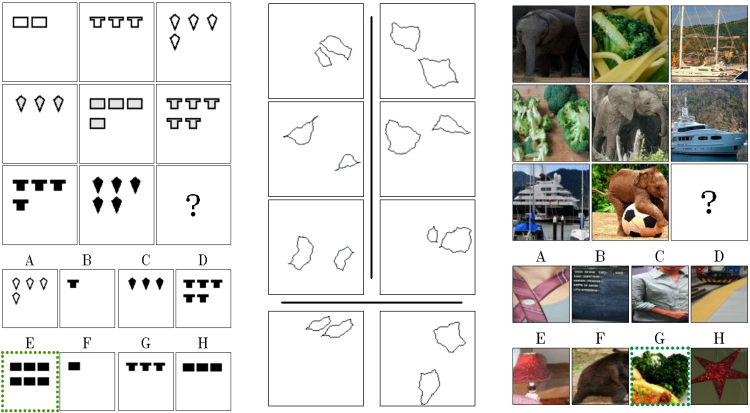Universal Learning Systems in Abstract Visual Reasoning
Mikołaj Małkiński
supervisor: prof. dr hab. inż. Jacek Mańdziuk
One of the fundamental goals of Artificial Intelligence is to reach levels of a so-called Artificial General Intelligence (AGI), characterized by autonomous learning systems with close to human-level reasoning capabilities. Among many AGI milestones, in the planned research we are particularly interested in intelligent systems that can autonomously (i.e. without external supervision) learn to solve disparate tasks of a given type with efficacy similar to specialized methods, dedicated to the particular tasks.
As a first step to develop universal learning systems, the Abstract Visual Reasoning (AVR) domain was reviewed. It contains problems that are commonly used to estimate human intelligence. AVR tasks test the ability of applying previously gained knowledge, experience and skills in a completely new setting, which makes them particularly well-suited for this task. Recently, the AVR problems have become popular as a proxy to study machine intelligence, which has led to emergence of new distinct types of problems and multiple benchmark sets. This presentation introduces two recent papers which review this emerging AVR research. Sample problems are illustrated in Fig. 1.
1. Małkiński, Mikołaj, and Jacek Mańdziuk. "A Review of Emerging Research Directions in Abstract Visual Reasoning." arXiv preprint arXiv:2202.10284 (2022).
2. Małkiński, Mikołaj, and Jacek Mańdziuk. "Deep Learning Methods for Abstract Visual Reasoning: A Survey on Raven's Progressive Matrices." arXiv preprint arXiv:2201.12382 (2022).

Fig. 1 Examples of AVR problems. (Left): Raven’s Progressive Matrix (RPM) from Sandia dataset. (Centre): A matrix from the Synthetic Visual Reasoning Test (SVRT).
(Right): RPM with real-world images from the V-PROM dataset.